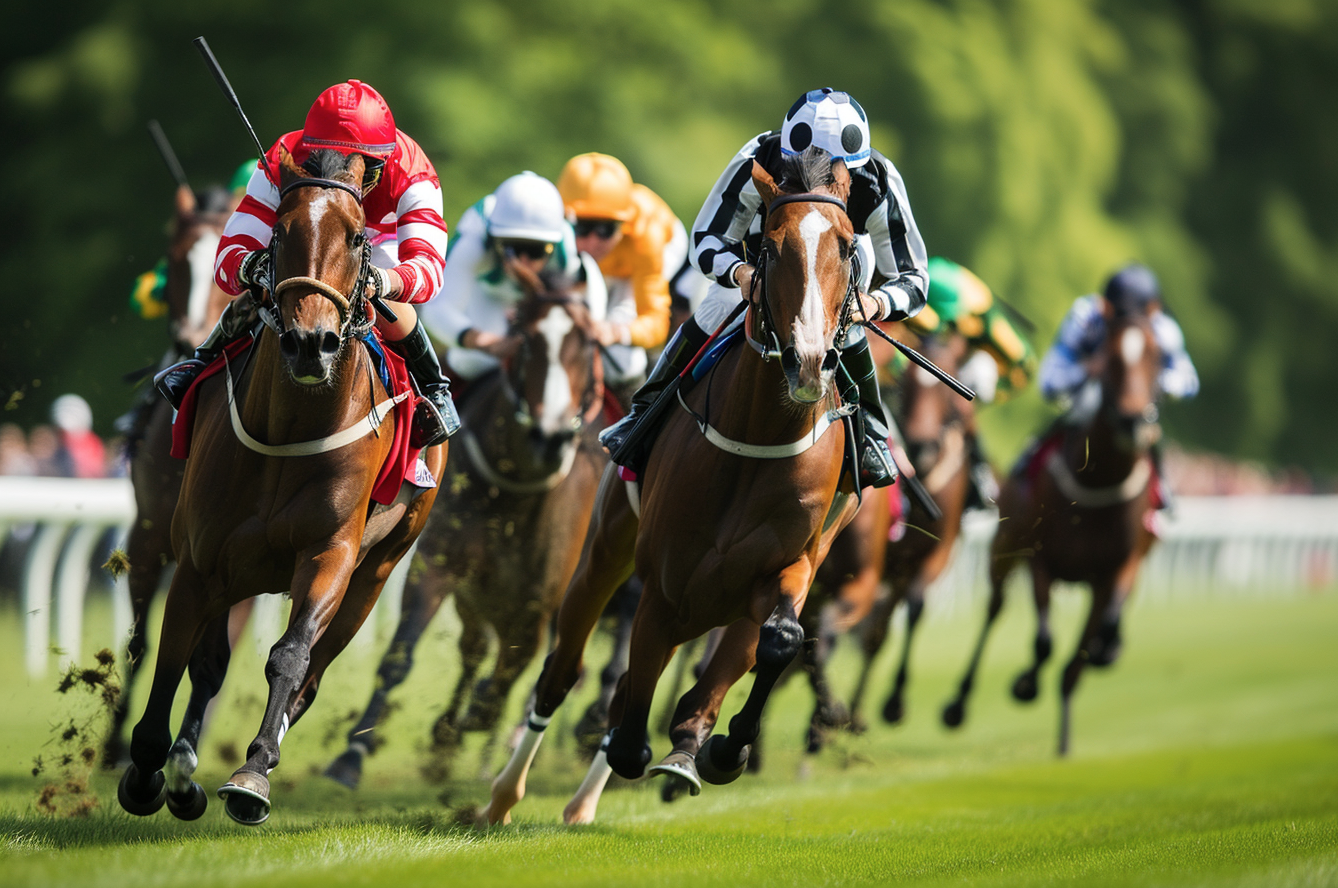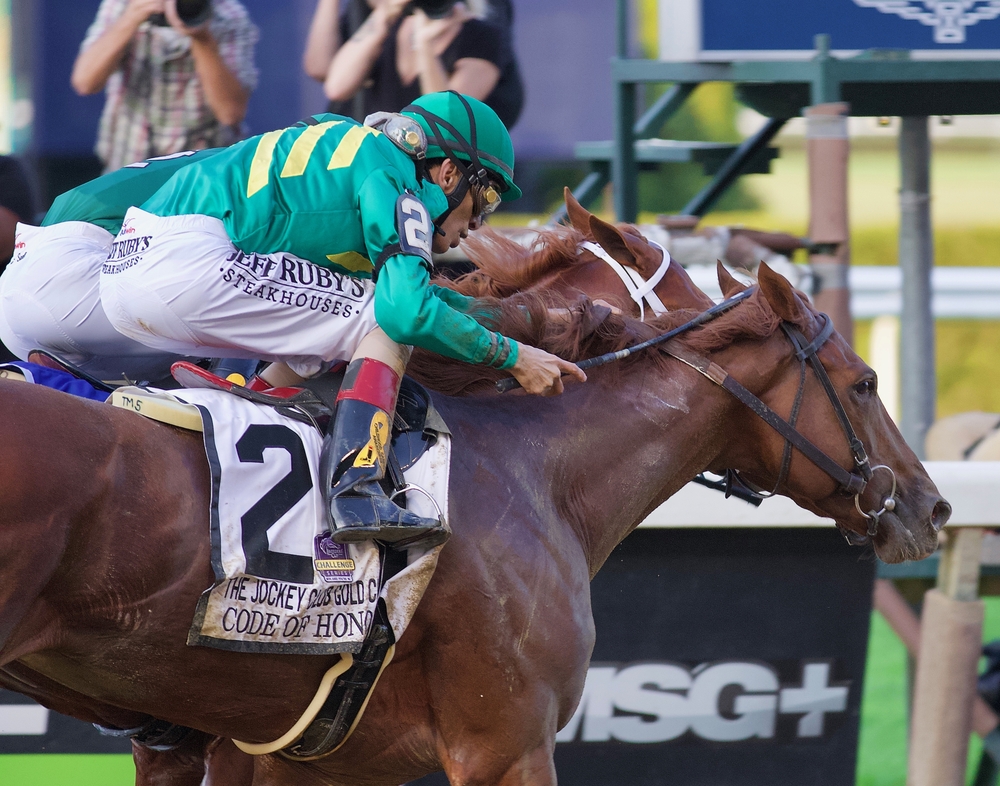In the realm of betting, the concept of a ‘strike rate’ is fundamental in measuring the effectiveness of one’s strategy, directly influencing potential profitability. Simply put, the strike rate calculates the frequency of winning bets against the total number made. This metric is represented as a percentage and is crucial for bettors in evaluating the performance of betting systems, tipsters, and their own bet selection process.
Understanding your own strike rate becomes particularly important when establishing a betting bank – the total amount of money set aside for wagering purposes. This knowledge allows bettors to manage their funds more effectively and set realistic expectations on returns. Furthermore, factoring in the average odds at which one bets facilitates a deeper understanding of what strike rate is required to break even or make a profit, invariably guiding more informed staking strategies.
When it comes to applying strike rate knowledge across different sports, one must take into account the variance in odds and bet types. Moreover, monitoring one’s strike rate can provide valuable insights that can lead to refinements in bet selection, ultimately impacting long-term betting success.
Key Takeaways
- Strike rate is a critical metric that represents the percentage of winning bets.
- Knowledge of strike rates assists in effective betting bank management and realistic expectation setting.
- Strike rate insights can refine betting strategies and impact long-term success.
Understanding Strike Rates in Betting
Strike rate is a critical metric that bettors use to measure the success of their betting strategies. It reflects the accuracy and efficiency of a betting approach.
Defining Strike Rate
The strike rate in betting refers to the proportion of successful bets out of the total number of bets placed. It is typically expressed in percentage terms and directly correlates with the probability of winning bets. To calculate the strike rate, one divides the number of winning bets by the total number of bets made and then multiplies the result by 100 to get a percentage.
Here’s an example for clarity:
- Total bets placed: 100
- Winning bets: 30
- Strike Rate: ( \frac{30}{100} \times 100 = 30%)
A higher strike rate indicates greater accuracy of selections and suggests a profitable betting strategy if the odds are in favour. Bettors use this measurement to assess the performance of tipsters, betting systems, or their own betting history. It’s important to note that strike rates must be considered alongside average winning odds to gauge the true profitability of a betting strategy.
The Importance of Strike Rates
Strike rates play a pivotal role in the world of betting, as they directly influence profitability and inform betting decisions. Understanding this metric allows bettors to gauge the performance of their betting strategies objectively.
Impact on Profitability
A bettor’s strike rate refers to the percentage of their bets that result in wins. It is a simple yet powerful indicator of success in betting. For instance, a strike rate of 25% from 100 bets indicates 25 winners. Profitability hinges on this figure, as it affects both the frequency of wins and the cushioning against losses. A higher strike rate usually equates to more consistent profits and a reduced risk of rapid bankroll depletion.
It is essential for punters to remember that a profitable strike rate is relative to the odds of the bets placed. To break even in betting, the strike rate must align with the average odds. For instance, at odds of 6/1 (7.00), the minimum strike rate required to break even can be calculated as follows:
To calculate the break-even strike rate, the formula is:
Break-even strike rate =(1/odds as decimal) x 100%
For odds of 6/1 (7.00), this translates to: (1/7) x 100% = 14.29%
This calculation means that with odds of 6/1, you need to win about 14.29% of your bets to break even over time. The formula takes into account the fact that at higher odds, each win needs to cover more losses, hence a lower strike rate is required to break even.
However, a high strike rate with low odds can be less profitable than a lower strike rate with higher odds, stressing the importance of finding a balance between the two.
Influence on Betting Decisions
Strike rates shape betting behaviours and strategies by providing a quantitative evaluation of betting performance. A bettor with a low strike rate must be prepared for longer losing streaks and must manage their bankroll accordingly to withstand such periods. This often requires great patience and a larger starting bank to cover potential losses.
Conversely, a higher strike rate leads to shorter losing runs, instilling confidence, and allowing for a more aggressive betting approach. Bettors might thus alter their strategies to target bets that historically lead to higher strike rates, adjusting stake sizes with a mind to maintaining a healthy bank balance while pursuing profitable opportunities.
In conclusion, understanding the nuances of strike rates is central to making informed decisions in the betting arena. The metric helps predict the potential success of betting systems and guides bettors towards strategies that align with their risk profiles and financial goals.
Calculating Strike Rates
In the realm of betting, understanding and calculating strike rates is fundamental for gauging the performance of betting strategies or tipsters. A strike rate is indicative of the efficiency of bets, calculated by considering the number of winning bets against the total placed.
Basic Calculation of Strike Rate
A punter’s strike rate is the percentage of bets that result in a win. This basic formulation is straightforward:
- Strike Rate (%) = (Number of Winning Bets / Total Bets) * 100
For example, if a bettor has placed 100 bets in total and has won 25 of those, the calculation would be (25/100) * 100, equating to a strike rate of 25%. This fundamental data point serves as a key indicator of a punt strategy’s viability.
Advanced Strike Rate Considerations
Upon establishing the basic strike rate, bettors may delve into more advanced considerations to manage their bank and understand potential outcomes:
- Expected Losing Runs: It’s crucial to determine the likelihood and length of losing runs to manage one’s bank appropriately. For instance, with a strike rate of 50%, the bettor could realistically encounter 10 consecutive losses over a prolonged betting period.
- Odds Impact on Strike Rate: Assessing how the odds correlate with the strike rate can illuminate the necessary strike rate to remain profitable. As odds increase, a lower strike rate might suffice for long-term gain, while shorter odds require a higher strike rate.
Calculations go beyond simply determining a win-loss ratio, encompassing predictions on losing runs and adjusting expectations according to the odds to safeguard a bettor’s bank and provide a realistic overview of betting outcomes.
Strike Rate and Betting Bank
The relationship between strike rate and the structure of a betting bank is fundamental, dictating how one manages their reserve bank to ensure sustainability and optimise for profit.
Effect on Bank Structure
The strike rate directly influences a bettor’s bank structure. A higher strike rate means a bettor can expect a steadier rate of winning bets, which may allow for a more aggressive bank structure. Conversely, a lower strike rate usually necessitates a more conservative approach to withstand longer sequences of losses.
- High Strike Rate (>50%): May justify a larger percentage of the bank per bet due to frequent wins.
- Low Strike Rate (<50%): Advisable to stake a smaller portion of the bank to cushion against losing streaks.
One must carefully evaluate the strike rate and adjust their starting bank accordingly, to prevent depletion during inevitable downturns.
Managing Bankroll with Strike Rate
Incorporating the strike rate into bankroll management strategy can significantly reduce the risk of exhausting one’s betting bank. For instance, if a bettor knows their tipster’s strike rate is 25%, they should prepare for longer losing streaks and adjust their stakes per bet to a smaller percentage of the betting bank.
- 45-55% Strike Rate: Risk no more than 2.0-2.5% of the bank on each bet.
- 35-45% Strike Rate: A prudent stake would be 1.5-2.0% of the bank.
- 25% Strike Rate: Advisable to deploy around 1.0% of the bank on individual bets.
One’s reserve bank should reflect these percentages, as it determines the capacity to sustain a betting strategy over the long term without eroding the opening bank unnecessarily.
Odds and Strike Rates
In the context of betting, the relationship between odds and strike rates is crucial for gauging the success and value of the betting strategy employed. Understanding how odds correlate with the strike rate helps punters in making informed decisions and finding bets that offer genuine value.
How Odds Affect Strike Rate Calculations
Odds in betting denote the probability of an outcome and are usually presented as fractional or decimal figures. The average price of betting odds can be directly associated with the expected strike rate. To break even, punters need to win enough bets to overcome the bookmaker’s edge, which is inherently factored into the odds provided.
Example of Strike Rate calculation:
- Decimal Odds: 3.00 (2/1 in fractional odds)
- Break-even Strike Rate: Assuming no bookmaker margin, a bettor would require a strike rate of 33.33% to break even (1 divided by the odds). This is because 100 / 3.00 = 33.33%.
The average winning odds that a bettor obtains greatly influence the necessary strike rate to ensure profitability. Bettors who typically place bets at higher odds would require a lower strike rate compared to those placing bets at lower average prices.
Finding Value in Odds
Finding value in betting terms means engaging in bets where the odds appear to be in favour of the bettor, compared to the actual risk involved. For a bet to have value, the probability of an event occurring should be higher than what the odds suggest.
Determining Value:
- Assess Probability: An individual bettor’s assessment of the event occurring is 50%.
- Compare with Betting Odds: The available betting odds are 2.20 (or 6/5 fractional odds).
- Calculating Implied Probability: The implied probability from the odds is 45.45% (100 / 2.20).
- Value Decision: Since the assessed probability of 50% is higher than the implied probability of 45.45%, the bet is considered to have value.
It is the disparity between the bettor’s assessed odds and the average price of betting odds where the concept of ‘value’ lies. The key to long-term success is consistently finding these value bets, which, despite potential short-term losses, can offer profitability over time when combined with an appropriate strike rate.
Strike Rates Across Different Sports
Strike rates are an essential aspect of sports betting, serving as a key performance indicator for bettors assessing the efficiency of their betting strategy across different sporting disciplines.
Comparison Between Sports
Different sports offer varying levels of predictability, which is reflected in their strike rates. For example, individual sports like tennis may present higher strike rates due to the reduced number of variables compared to team sports like football. Betting markets across sports not only differ in terms of odds but also in how frequently a punter can expect to win, based on the nature of the sport and the specificity of the market being bet on.
Specifics of Strike Rates in Football
In football, strike rates are usually lower due to the unpredictable nature of the sport. Bettors analyse past performance, team form, and other statistical data to make informed predictions. Common markets include match outcomes (win, lose, draw), over/under goals, and both teams to score, with strike rates varying across these different betting options. High-scoring leagues may offer better strike rates on over/under markets, while more defensive leagues could lead to higher strike rates on both teams not scoring.
Strike Rates in Horse Racing
Horse racing presents a different challenge, with strike rates often influenced by the type of race and the form of the horses participating. Flat races may have more predictable outcomes compared to National Hunt races, which include obstacles and thus higher variability. Bettors may find consistently profitable strike rates by focusing on specific types of races or on form horses that display strong past performance indicators.
Tipsters and Strike Rates
When evaluating the potential of a betting tipster, their strike rate is a crucial metric. It quantifies their accuracy in predicting winning bets and directly affects the profitability of the service they provide. Understanding this will guide bettors in developing a strategy that balances risks with the potential return on investment (ROI).
Analysing a Tipster’s Strike Rate
A tipster’s strike rate represents the frequency of successful bets compared to the total number suggested. It’s calculated by dividing the number of wins by the total number of bets, typically expressed as a percentage. For instance, a tipster who recommends 100 bets and achieves 30 wins operates at a 30% strike rate. Bettors should consider both the strike rate and the recommended odds when evaluating profit potential, as higher odds can afford a lower strike rate while maintaining or even boosting ROI.
Key factors to consider in a tipster’s strike rate:
- Consistency: Regularly maintaining a high strike rate indicates skill and knowledge.
- Sample Size: A larger number of bets ensures that the strike rate is a reliable indicator.
- Betting Markets: Some tipsters perform better in specific markets, affecting their overall strike rate.
Strike rates must be scrutinised over a sufficient period to ensure they’re not skewed by short-term fluctuations.
The Role of Tipsters in Betting Strategies
Tipsters play a pivotal role in informing betting strategies. Their advice and predictions can significantly influence a bettor’s decisions. A tipster with a high strike rate suggests proficiency, potentially leading to higher ROI for those who follow their advice. However, the profitability of following a tipster also depends on the types of bets they suggest and the associated odds.
Considerations for a tipster’s impact on betting strategies:
- ROI: A high strike rate can be appealing, but without favourable odds, it may not translate to a profitable ROI.
- Betting Budget: Using a tipster’s service should align with a bettor’s budget and risk tolerance.
- Diversification: Relying on multiple tipsters can spread risk and increase the breadth of betting opportunities.
Bettors are advised to weigh a tipster’s strike rate alongside their own betting goals to craft a strategy that suits individual preferences and objectives.
Staking Strategies and Strike Rate
The relationship between staking strategies and strike rate is pivotal for bettors aiming to manage their bankroll effectively. It’s crucial to select a staking plan that aligns with one’s strike rate to maintain a sustainable betting strategy over the long term.
Stake Sizing According to Strike Rate
Stake sizing should be proportional to a bettor’s strike rate—the percentage of successful bets out of the total placed. A bettor with a higher strike rate can afford to risk more of their bankroll per bet, as their chances of winning are greater. Conversely, if the strike rate is low, one should size their bets smaller to protect their bankroll from rapid depletion.
For example:
- Strike Rate: 40%
- Ideal Stake: Up to 2% of bankroll
- Strike Rate: 60%
- Ideal Stake: Up to 4% of bankroll
Adapting Staking Strategies Based on Performance
Bettors should regularly assess their betting performance and adjust their staking strategy accordingly. If a bettor’s strike rate increases, they might consider incrementally increasing their initial stake. This approach can capitalise on the positive trend while remaining mindful of the inherent risk of regression. Alternatively, a decrease in strike rate warrants a reduction in stake sizing to safeguard the bankroll and ensure the longevity of the betting strategy.
Adjustment methodology:
- Calculate updated strike rate over recent bets
- Adjust stake percentage based on the updated strike rate
- Monitor performance and repeat the process
Adhering to these principles can help bettors remain disciplined in their approach and make informed decisions based on their betting system’s performance.
Psychological Aspects of Strike Rates
Strike rates in betting can significantly affect the bettor’s psychological state, especially during losing sequences and when trying to maintain discipline. Understanding these psychological aspects is key for a bettor’s long-term success.
Dealing with Losing Streaks
Losing streaks can be disheartening and may lead to impulsive decision-making. Strike rates often illustrate that losing sequences are a normal part of betting. Patience is crucial, as even with a high strike rate, a 50% chance of hitting ten losses in a row over 650 bets can exist. Punters must recognise that losing streaks don’t necessarily reflect the quality of their betting strategy, but are often a probability of chance.
Maintaining Discipline in Betting
To maintain discipline, bettors should focus on the long-term perspective, where strike rates and the average winning odds are more telling than the outcome of individual bets. A consistent approach, backed by a robust strategy, mitigates the risk of erratic betting in the face of winning or losing runs. It is essential for a bettor to understand that a winning run does not guarantee future success, just as a losing streak doesn’t predict continual losses.
By adhering to a disciplined strategy that accounts for the psychological challenges posed by strike rates, bettors can make more informed decisions and remain steadfast during the inevitable ups and downs of betting.
Applying Strike Rate Data
When engaging in betting, understanding and utilising strike rate data is crucial for developing a predictive edge and strategising effectively. Using historical data, bettors can estimate the probability of future outcomes and tailor their betting strategies accordingly.
Predictive Use of Strike Rate
Strike rate, defined as the percentage of winning bets across a given sample, serves as a key indicator of a bettor’s effectiveness. A punter, for example, with a 40% strike rate over a substantial sample size, can infer the likelihood of experiencing a losing streak within their betting series. Probabilistic analysis suggests that there is a notable chance of encountering a sequence of 10 or more losses, which can be planned for.
- Probability of Losing Streaks: With a 40% strike rate, the probability of a losing streak occurring can be quantified:
- 10 losses: Approximately 75% chance
- 12 losses: Around 50% probability
- 14 losses: Roughly 25% chance
Strategic Betting with Strike Rate Information
Knowing one’s strike rate enables the development of value betting strategies, targeting bets that offer a higher expected value than the odds suggest. It’s about finding a balance between the strike rate and the average winning odds. For instance, if a punter’s average winning odds are at 6/1, they’d require a minimum strike rate of approximately 16.67% to break even.
Bettors often leverage strike rate data to:
- Set realistic targets: Aim for sustained profitability rather than perfection.
- Calculate break-even points: Align average odds with strike rates to determine the viability of bets.
- Craft staking plans: Adapt bet sizes based on the strike rate to manage the bankroll effectively.
By factoring in the strike rate with data on winning odds, bettors can better gauge the value present in each bet and can more strategically allocate their wagers.
Tools for Monitoring Strike Rates
Developing a robust system for monitoring strike rates is essential for bettors who aim to evaluate their betting performance objectively. It involves leveraging technology and data for accurate tracking and analysis.
Software and Systems for Tracking
Bettors utilise various software solutions to keep accurate records of their betting activities. Dedicated tracking systems are specifically designed to log every bet placed, including the odds, stake, and outcome. This method allows bettors to calculate their strike rate, which is the percentage of winning bets, with precision. Systems can range from simple spreadsheet templates to sophisticated betting software that offers additional functionality, such as betting analytics and historical data visualisation. By keeping a detailed record, bettors can analyse patterns and adjust strategies accordingly.
Utilising Data from Betting Exchanges and Bookmakers
Betting exchanges and bookmakers provide a wealth of data that can be critical for calculating and assessing a bettor’s strike rate. Bettors can extract their betting history from their accounts on these platforms. The data typically include the list of all the bets they have placed and the outcomes. By systematically organising this information, bettors can assess their strike rate and understand their success rate in the context of the given odds. Moreover, betting exchanges offer the advantage of lay betting, which needs to be factored into the strike rate calculations, as these bets win when an outcome does not occur.
Frequently Asked Questions
This section provides clear and direct answers to common queries pertaining to the calculation and significance of strike rates in sports betting, as well as understanding different betting odds.
How can one calculate the strike rate for sports betting?
The strike rate in sports betting is calculated by dividing the number of winning bets by the total number of bets placed, then multiplying by 100 to get a percentage. For instance, if a punter places 100 bets and wins 30 of those, their strike rate is [(30/100) * 100] = 30%.
What is the significance of the strike rate in the context of horse racing wagers?
In horse racing, a bettor’s strike rate is critical for evaluating the effectiveness of their betting strategy. A higher strike rate indicates more frequent wins, which can imply a more successful approach, although it should always be considered alongside the odds and types of bets placed.
How does a lay bet strike rate differ from a traditional strike rate?
Lay bet strike rates are calculated by considering how often a bettor successfully predicts a loss. Unlike traditional strike rates, which focus on the number of winning bets, lay betting strike rates assess the accuracy of predicting unsuccessful outcomes in an event.
What methods are employed to determine break-even odds in betting?
Break-even odds are determined by assessing a bettor’s strike rate and calculating the odds at which they would neither make a profit nor incur a loss over time. If a bettor has a strike rate of 20%, they need to consistently obtain odds of at least 5/1 (equivalent to 6.0 in decimal terms) to break even.
In betting terminology, what is implied by fractional odds such as 9/2?
Fractional odds of 9/2 imply that a bettor could win £9 for every £2 staked, not accounting for the return of the stake. These odds indicate the potential profit relative to the stake and are particularly common in the UK betting market.
How do you properly interpret and compare different betting odds?
Betting odds can be interpreted by understanding the implied probability and potential return. They can be presented in fractional (e.g., 9/2), decimal (e.g., 5.5), or American (e.g., +450) formats, which can all be converted to understand the likelihood of an outcome and to compare which odds offer better value.





